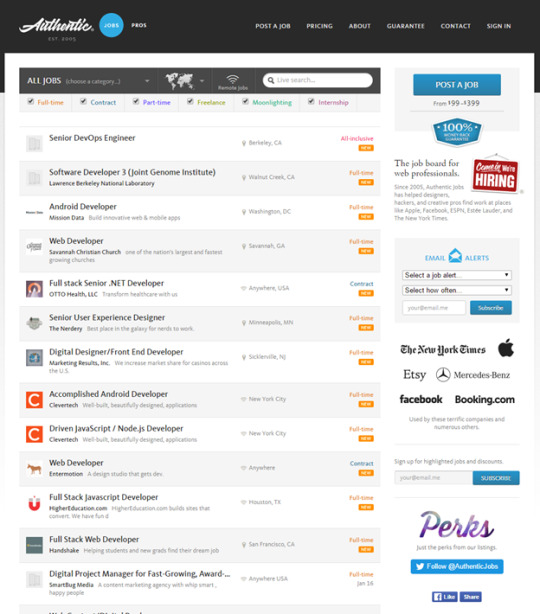Text
youtube
0 notes
Text
Static sites
The diagram below shows a basic web server architecture for a static site (a static site is one that returns the same hard-coded content from the server whenever a particular resource is requested). When a user wants to navigate to a page, the browser sends an HTTP "GET" request specifying its URL.
The server retrieves the requested document from its file system and returns an HTTP response containing the document and a success status (usually 200 OK). If the file cannot be retrieved for some reason, an error status is returned

1 note
·
View note
Text
Most large-scale websites use server-side code to dynamically display different data when needed, generally pulled out of a database stored on a server and sent to the client to be displayed via some code (e.g. HTML and JavaScript).
Perhaps the most significant benefit of server-side code is that it allows you to tailor website content for individual users. Dynamic sites can highlight content that is more relevant based on user preferences and habits. It can also make sites easier to use by storing personal preferences and information — for example reusing stored credit card details to streamline subsequent payments.
It can even allow interaction with users of the site, sending notifications and updates via email or through other channels. All of these capabilities enable much deeper engagement with users.
1 note
·
View note
Text
Different approaches to implementing mobile websites have each their advantages and disadvantages. The same mobile user-experience principles apply independent of implementation. On the web, not all websites are created equal. On a mobile device, users can encounter one of the following types of sites:
Mobile-dedicated sites are designed for mobile phones.
Web apps are a special type of mobile-dedicated site that looks and feels like an app.
Responsive-design sites are sites designed for a multitude of devices with different screen sizes; they automatically adjust the layout of their content to the available screen size.
Full (or desktop) sites are designed for the desktop and are not mobile optimized.
Mobile-Dedicated Sites
Mobile-dedicated sites are sites designed specifically for mobile phones. They often live under a separate URL (e.g., m.site.com) and are completely distinct from the full site. They contain features or content that have been deemed appropriate for mobile; frequently, these are just a subset of what is available on the desktop. They are often contrasted with responsive sites, which typically contain the same content and functionality for mobile and desktop, but rearrange these features on mobile. Web Apps
Web apps are not real applications; they are really websites that may look and feel like native applications, but are not implemented as such.
Responsive Design
Responsive design is a development technique that detects the client type and dynamically adjusts the layout of a site according to the size of the screen on which it is displayed. Thus, the same content may be displayed in a three-column format on a desktop, two-column format on a tablet, and one-column format on a smartphone.

2 notes
·
View notes
Text
body{ background-color: #d3d3d3; margin: auto; width: 800px; font-family: Arial, Helvetica, sans-serif;} header{ background-color: black; line-height: 0.5; padding-top: 2%; padding-bottom: 2%; padding-left: 2%;}footer{ background-color: #000000; padding-top: 0%; padding-bottom: 0%; padding-right: 2%; padding-left: 2%;}
2 notes
·
View notes
Text
Body{
backgroung-color: green;
font family: aerial, helvética, sans-serif;
font-size: 16px;
font-weight: normal;
}
P{
font family: helvetica: sans-serif
Line spacing: 1.5;
}
2 notes
·
View notes
Text
<!DOCTYPE html>
<html lang="en">
<head>
<meta charset="UTF-8">
<title>My Title</title>
</head>
<body>
<header>
<nav>..navigation menu links here…</nav>
</header>
<article>
<section>…</section>
<section>…</section>
<section>…</section>
</article>
<aside>…</aside>
<footer>…</footer>
</body>
</html>
3 notes
·
View notes
Text
2 notes
·
View notes
Text
https://sleekcreatives.tumblr.com/post/633461465465176064/3-major-structures-of-website-creation-html-css #html #css #javascript
2 notes
·
View notes
Text
<img src =“images/dog.jpg” alt= “photo of a dog”>
<a href= “https://www.griffith.ie>Griffith college</a>
1 note
·
View note
Text
Today I learnt how to add lists, images and links tag to html using the:
<li> which defines a list item
<ol> which represents ordered list
<ul> which represents unordered list
<img> tag which helps add images to your html and
<a> which helps add a link to your html by <a href= “https://www.griffith.ie>Griffith college</a>
1 note
·
View note
Text
I used to be really fascinated and overwhelmed when I watch friends coding. I had a lot of interest but in my mind am like what’s all these letters and symbols and then I get discouraged and be like I can’t do it but since I started with the basics I must say I think I actually like it a lot and even want to learn more.
<doctype html!>
<doc lang = “en”>
<head>
<title>learning html</title>
</head>
<body>
<h1>what is html?</h1>
<p>html stand for hypertext markup
language<p>
</body>
</html>
I know this is just the basics but I am learning everyday and someday I’ll build standard web pages for people and organizations #html
1 note
·
View note